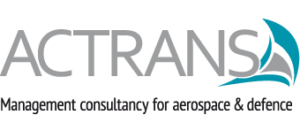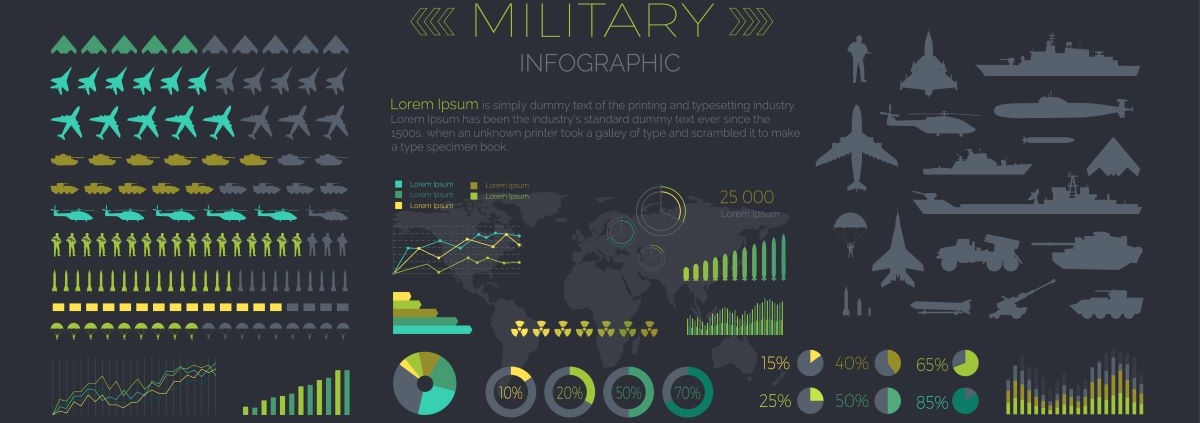How to Quantify Defense Market Potentials
By Dr. Mike Körner and Dr. Martin Krause //
The Ukraine war requires a dynamic shift to growth in the Western defense industry in the short term. Some people are talking about a super cycle for the defense industry, as old weapon systems will often have to be replaced. Additionally, the number of available systems will have to be increased significantly in the next few years due to the new security situation. Based on what market assumptions should Defense companies make long-term plans, make investment decisions, and manage global sales? However, the speed, trajectory as well as the peak of market growth by country and weapon system cannot be quantified with traditional methods of the last 30 years or with today’s Defense market databases. Therefore, ACTRANS has developed a new top-down method for market projection.
Planning, but with which numbers?
Both the demand for armaments and the overall armaments market have developed a great deal of momentum since the start of the war in Ukraine. While numerous NATO countries have already announced or ordered large arms packages, only a small part of the announced EUR 100 bn has so far reached the German defense industry. Moreover, the total military requirements for Germany as well as for other countries have not yet been planned – or if they have, it is not known to the public and the industry. The dynamics, course, and peak of growth must therefore be estimated using new methods. Complex defense equipment in particular with its long supply chains requires long-term planning and investment.
Market leader “Janes Information Services” will not be able to map the new market dynamics for years to come
The defense market has been relatively easy to plan and analyze over the past 30 years. Janes Information Services has built a detailed global database based on publicly available information (OSINT) that stores all published procurement projects in detail (bottom-up). A stable military focus on overseas operations, predictable procurement of mostly replacements, and long-term budget planning made estimating market potential relatively easy and Janes indispensable.
However, the market-leading Janes database contains only confirmed defense procurement programs, stored by name, unit quantity and budget. In addition, updates by country occur at intervals of several months. As a result, this bottom-up approach still largely reflects the market situation before the Ukraine war and does not allow conclusions to be drawn about dynamics, progression, and growth peaks in the long term. One always remains “behind the wave” and on sight with this market model.
Military planning and procurement are complex and take a long time to translate into actual procurements. Western military planners had relied heavily on hybrid warfare with elements such as reconnaissance or cyberattacks in past decades and were surprised by conventional land warfare in Europe with its masses of tanks, ammunition, and artillery. The dynamics of the threat from China, in particular, require comprehensive military replanning.
New method for evaluating the defense market
With our top-down approach, we put ourselves in the shoes of top military planners. Their task is to define a worst-case scenario for the next ten years and align their military capability and procurement planning with it. For scenario design and capability planning, we draw on external military expertise and work with historical analogies, reference values as well as transparent assumptions. Conventional, high-intensity land warfare against an equal or superior adversary (Russia, supported by China, without US support for Europe) combined with a nuclear threat could serve as a European worst-case scenario in the context of the China great power rivalry between the US and China.
Based on this worst-case scenario, we plan a target value for weapon systems and compare it to current actual values. Once the overall market potential has been approximated in this way and a realistic ramp-up has been planned, various specifics such as a change in technology can additionally be modeled for individual companies in the second step. The ACTRANS method makes it possible to determine top-down the market potential and various scenarios over a ten-year period by country and region, but also by military branch and weapon system along the value chain.
ACTRANS is a management consultancy focusing on Aerospace and Defense technology, transformation, and innovation. Together with our network of experts, we help our customers to adapt their market intelligence, their demand forecasts as well as their investments so that they can build up production capacities to the realities of the new dynamics. For this purpose, ACTRANS has developed the market sizing model presented above to assess the potential.


 Picture Alliance, DPA/EADS
Picture Alliance, DPA/EADS